Best Cordless Barrel Grip Jigsaw – Head-To-Head
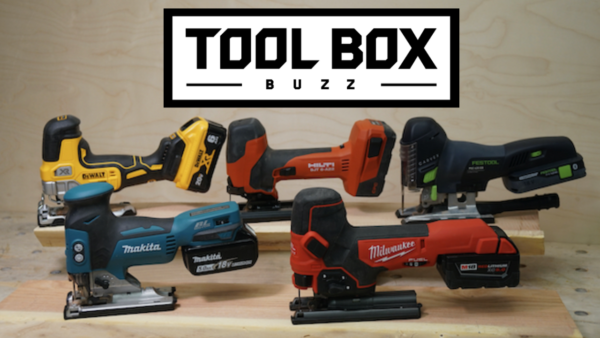 Best Cordless Barrel Grip Jigsaw – Comparison Testing
Best Cordless Barrel Grip Jigsaw – Comparison Testing
As we recently pointed out, we love jigsaws for their ability to quickly and seamlessly customize shapes and sizes of lumber or trim. We recently had the chance to finish round 1 of our Best D-Handle Jigsaw Head-to-Head featuring a variety of battery-powered D-handled jigsaws. But D-handle jigsaws are not the only type on the market and many PROs have reached out to us with questions about barrel grip jigsaws. We designed Round 2 of our Jigsaw Head-to-Head to test out these barrel-handled beauties. We used many of the same rigorous tests and tasks from round 1 while focusing on various designs, power, performance, and ergonomic features.
Best Cordless Barrel Grip Jigsaw Evaluation Format
For this Best Barrel Grip Jigsaw evaluation, several categories were developed including; Precision & Accuracy, Performance (speed/power), Features, Ergonomics, and Price.
Each of the categories was ranked individually and used to determine the Best Barrel Grip Jigsaw based on the combined results.
- Accuracy – The accuracy of the jigsaws was compared including the ability to follow a shape, blade drift, and ease of cutting along irregular paths.
- Performance [Power / Speed Test]-We looked at cutting speed as an indicator of saw motor performance.
- Features – An overall comparison of features and specifications.
- Ergonomics – Ergonomics are really important to users and an important category to consider when purchasing any power tool. In addition to traditional ergonomics, we also included functionality in this category.
- Vibration – we recorded and analyzed the vibrations of the tools during our speed testing.
- Price – Price is always an important factor in determining which saw is best for a user. We’ve included the current pricing found online for each of the saws “as-tested,” at the time of publication.
- Best Value Saw – Often times this category winner tends to resonate with most folks as it tends to perform well in the tests but feels good on the wallet
Cordless Jigsaw Specifications
DEWALT
- Model: DCS335
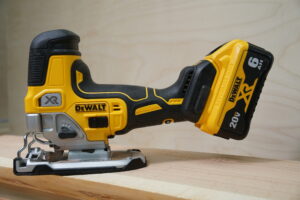
- Strokes Per Minute: 0-3200SPM
- Stroke Length: 1-1/8″
- Weight: 4.5 lbs
- Tool-Free Blade Change
- Accepts T shank blades
- Built-in dust blower
- Keyless shoe bevel with detents at 0°, 15°, 30°, and a positive stop at 45°
- Variable speed dial
Festool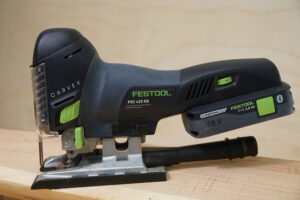
- Model: PSC 420 EB Cordless Carvex
- Strokes Per Minute: 500-3,800SPM
- Stroke Length: 1″
- Weight: 5.29 lbs
- Tool-Free Blade Change
- Variable speed dial with “Auto” function
Hilti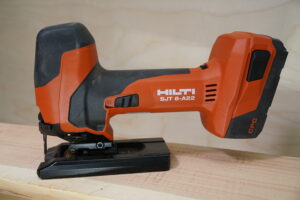
- Model: SJT 6-A22
- Strokes Per Minute: 0-3,000SPM
- Stroke Length: 1-3/32″
- Weight: 4.8 lbs
- Tool-Free Blade Change
- Accepts T shank blades
- Built-in dust blower
- 45° bevel shoe capacity for angled cuts in both directions
- Variable Speed Dial
Makita
- Model: XVJ01Z
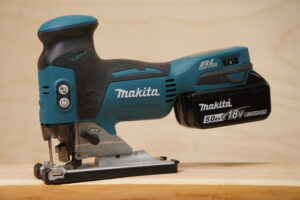
- Strokes Per Minute: 800-3500 SPM
- Stroke Length: 1″
- Weight: 5.5 lbs
- Tool-Free Blade Change
- Accepts T shank blades
- Built-in dust blower
- 45° bevel shoe capacity for angled cuts in both directions
- Variable Speed Dial
Milwaukee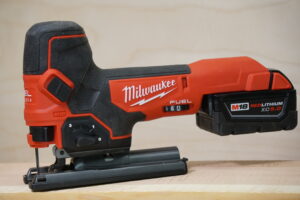
- Model: 2737B-20
- Strokes Per Minute: 0-3,500SPM
- Stroke Length: 1″
- Weight: 4.59lbs
- Tool-Free Blade Change
- Accepts T shank blades
- Built-in dust blower
- 45° bevel shoe capacity for angled cuts in both directions
- Variable Speed Dial
Cordless Jigsaw Accuracy
For the accuracy category each of the jigsaws was ranked on accuracy in the following areas:
- Line of Sight
- Blade tracking
- Bevel accuracy when set to 45 degrees.
- Cross-cut accuracy when set to 90 degrees (how perpendicular the cut is to the surface)
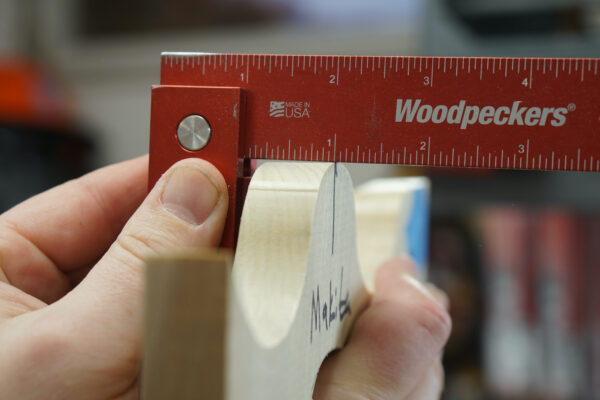
The major factors that affect the accuracy of jigsaw cuts are: How well you can see the line of cut and how well the saw’s blade stays square to the workpiece (or at a fixed angle during bevel cuts). Generally, a jigsaw with less of its body overhanging the blade is easier to use, especially when you’re working in cramped quarters or trying to follow a curved line, for example cutting out a scrollwork pattern.
Diablo Jigsaw Blades
To be consistent, all the jigsaws were equipped with a new DIABLO 3-1/4″ 20-TPI scrolling blade and a DIABLO 4″ 10-TPI Fine Finish Wood blade. Each jigsaw was tested at 90-degree, 45-degree, and also with a scrolling blade for pattern work.
Line of Sight
For the scroll cutting each saw was set to maximum speed with zero orbital action. A scrolling template was used to trace all the boards consistently, and each jigsaw was used to make numerous cuts in 3/4′” Poplar.
The DEWALT and Makita both had excellent cut line visibility, and the Makita was the best performing saw on the scroll cuts.
The Milwaukee cut line visibility was good but not great and the Hilti dust shroud got in the way of the line of sight so we removed it. We all agreed that if we owned this saw the shroud would stay off.
The Festool saw blade was difficult to see. The small-sized Diablo blade got lost [visually] inside the V-shaped blade guard.
When cutting bevels the DEWALT saw had the best bevel sightline. Makita sightlines were slightly obscured, and Festool and Milwaukee had terrible sightlines. The Hilti sightline was good, but the LED light was blocked when set to a bevel.
Clean Cutting
Getting clean jigsaw cuts with only light splintering, tear out, and surface chipping is chiefly a matter of selecting a blade that’s designed for the job. All the saws were evaluated on how clean the saws cut.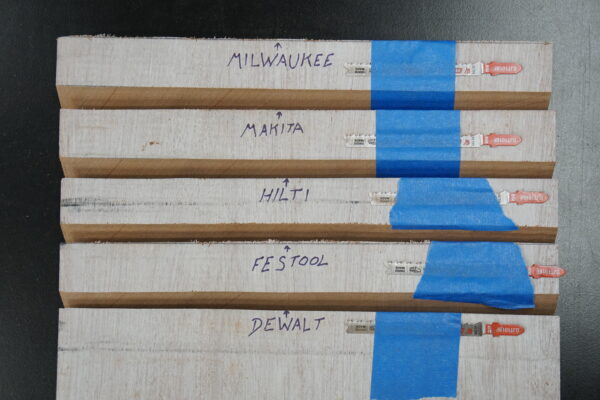
The DEWALT, Hilti, and Makita produced the cleanest edge, cutting saws with the least tear-out. This “clean-cut result,” was also due to using the same Diablo blades along with the operator’s skill set using the tools.
Accuracy Clean Cut Rank Makita 1 DEWALT 2 Hilti 3 Festool 4 Milwaukee 5
The Festool and Milwaukee surprised us with rougher cuts
Blade Deflection
Every cut was measured and evaluated for blade deflection at 45-degree and 90-degree cutting. On the 90-degree cuts, Milwaukee ranked the best, followed by Makita and Festool.
On the 45-degree cuts, the Makita ranked the best, followed by the Festool, and Milwaukee.
45 Deg Rank Makita 1 Festool 2 Milwaukee 3 DEWALT 4 Hilti 5
90 deg Rank Milwaukee 1 Makita 2 Festool 3 DEWALT 4 Hilti 5
Blade Tracking
Tracking was evaluated by following lines to see how easy or hard it was to follow the line. The Makita, Festool, and DEWALT were the best tracking jigsaws.
Tracking Rank Makita 1 Festool 2 DEWALT 3 Milwaukee 4 Hilti 5
It’s worth noting that when scoring the line-of-sight, points were awarded based on the operator’s ability to consistently see the blade cutting through the poplar. Points were not awarded based on the cut-line deviation from the template cut-line. This ensured that operator error was minimized as a primary scoring factor in this evaluation area.
Best Cordless Jigsaw Accuracy Winner – MAKITA
Accuracy Clean Cut 45 Blade Deflection 90 Blade Deflection Tracking Score Total TBB RANK Makita 1 1 2 1 5 1 Festool 4 2 3 2 11 2 DEWALT 2 4 4 3 13 3 Milwaukee 5 3 1 4 13 3 Hilti 3 5 5 5 18 4
Makita scored tops in three out of the four categories [clean cuts, tracking, and 45-degree blade deflection] and came in second 90-degree blade deflection. It scored a near-perfect score of 5-points and is truly a nice cutting, accurate jigsaw.
The Festool scored 11-points and the DEWALT tied with Milwaukee with 13-points. Hilti did not fare well in this testing coming in at 18 points
Performance Testing (Power/Speed)
An obvious question when comparing the performance of different jigsaws is “which saw cuts the fastest?” This test also equates to power and power equates to cutting thicker, harder-to-cut materials.
Recognizing that using jigsaws requires the operator to make dozens if not, hundreds of minuscule adjustments during each cut we decided to try to eliminate the human variable. To test the power, we built a jig to hold the saws and pull the saws into 3/4″ plywood using a weighted pulley system.
In the TBB jig, we supported the 3’ pieces of plywood on a frame that in turn was held to the workbench by clamps. The frame allowed for the clearance of the maximum depth of the jigsaw blade. We also used a hold-down clamp on the far edge of the frame and secured the plywood to the frame with three screws each time we made a cut. That replicated the way a piece of material would be secured in the field. Each saw was fitted with a DIABLO 5″ 6-TPI Fast Cutting Wood blade, designed specifically for fast, rough cutting.
We designed the height of the fixture to be such that the bottom of the sled holding the saw just touched the plywood material. We wanted no gap between the sled and the workpiece because this would introduce additional vibration and is not the manner in which one uses a jigsaw. To cut down on the friction of the larger sled base, we installed an HDPE slick strip surface onto the bottom of the sled. This meant that each run would have consistent friction between the sled and the material. Also, this closely emulated the way the tool is commonly used.
We used this jig to remove as much human variation as possible to allow for the fairest capabilities-based test possible. We used natural, constant force (via the weight) to provide a straight, equal frictionless track to allow the saws the chance to cut as fast as they could. The saw’s motor power provided consistent strokes per minute (SPM) speed.
The pulling force was provided by a weighted pulley system which pulled the jigsaws through the material with consistent force. This approach has 2 main benefits:
- First, it allows a constant force to be applied to each jigsaw in the same way that an operator tries to apply a constant force while cutting.
- Secondly, by allowing for natural resistance (as opposed to forcing a constant cutting speed via mechanical motors) it allows the saw to cut at its natural maximum speed based on the maximum strokes per minute and the power of the motor. This also underscores the importance of using the same blade types on all saws as without it this test would not truly measure the natural maximum cutting speed.
The sled fixture held the saws securely and the aluminum tracks kept the saw moving in a consistent and parallel fashion. The saws were in contact with the sled and the sled in contact with the workpiece. During the course of testing, this fixture performed with no issues.
Performance Testing (Power/Speed) – Winner Milwaukee
We rank the performance testing by normalizing Watt-hours. Milwaukee came in on top followed by Hilti and Festool. When watching this test all of the crew members commented on Milwaukee’s speed, which equates to power.
These saws came with a different sized “energy power plant” or a combination of battery voltages and Amp-hour ratings. As you can imagine, the saw with the greatest watt-hour battery theoretically has a leg up on its competition with regard to performance.
For our cordless tool comparisons, we level the playing field by normalizing the results based on total watt-hours. In this way, the reader can see which saw has the most effective combination of battery technology, stamina, and motor power on a per-watt-hour basis.
Performance Normalized Ave RUNS Sec Watt Hr Normalize Factor@ 90 W-hr Normalized Run Times RANK Milwaukee 9.6 90 1.00 9.6 1 Festool 13.4 72 0.80 10.7 2 Hilti 14.5 86.4 0.96 13.9 3 Makita 20.3 90 1.00 20.3 4 DEWALT 19.2 108 1.20 23.0 5
In this H2H, the batteries were all 18v (under load), with the exception being the Hilti which operates at 22v, nominal. As you can see in the attached table, we calculated a watt-hour normalization factor based upon a 90 watt-hr. battery pack. We then multiply this factor by the cut-times to create a normalized set of performance/power results. The table shows the results of the normalized performance test rankings.
Best Cordless Jigsaw Features – Winner DEWALT
Comparing tool features from multiple brands is never easy but the devil is in the details, so a feature comparison is certainly warranted. We looked at 9 different features on these saws and rated them 1 through 5 for each saw. [1 being best]
- Grip / Trigger
- Soft Start
- Variable Speed [Dial]
- Selectable Blade Orbit
- Blade Guide System
- Blade Change Clamp
- Shoe plate – Tilting
- Dust Blower / Collection
- LED Light
FEATURES Var Speed Dials Blower LED Blade Guide Slow Start Selectable Blade Orbit Tool-less bevel lock Total TBB Rank DEWALT 1 3 1 2 3 1 1 12 1 Makita 2 2 3 2 1 1 2 13 2 Milwaukee 3 2 1 2 2 1 3 14 3 Hilti 1 1 3 2 3 2 3 15 4 Festool 2 4 2 1 2 1 4 16 5
All of these jigsaws are pro saws, rich in features. The DEWALT saw scored top in four feature categories 2nd in one category and 3rd in two categories with a total score of 12-points. A real close second place went to Makita with 13-points with 1st or 2nd place scores in every category. Third place went to Milwaukee with 14-points.
Barrel Grip
A grip is important on a jigsaw for user comfort and also because a solid grip is essential to controlling the movement of the tool during cutting. In general, over-molds are softer to the touch than hard plastic, provide a more secure grip and even dampen tool vibration slightly.
The Hilti had a superior grip with well-placed over-molding and comfortable finger placement. The team favored the smaller diameter barrel which allows a full finger grasp around the barrel.
The Makita also has a nice grip. The team was split with the trigger safety feature on the Makita that requires you to turn the power on or off via a separate button.
The crew members that had recently used Makita tools were used to it and knew that it was a consistent feature on newer tools. Other team members felt like it was an unnecessary additional step and did not like having to press a button before the tool started.
Soft / Auto Start
The Makita jigsaw has “soft-start” motor electronics that start the motor at a slow level and stays at a low speed until the tool starts to cut material. In general, a soft start can prevent the saw from suddenly jerking if you start cutting with the blade in contact with the material. Once the saw engages material the RPMs ramp up.
The Festool and Milwaukee have an “A” symbol on the variable speed dial that also starts the saw at a lower rpm speed and speeds up when the blade engages the material being cut.
Variable Speed
All of the jigsaws have a variable-speed dial. Variable-speed dials that allow you to set the upper limit of motor speed and, hence, the number of blade strokes per minute. This makes a jigsaw a more versatile cutting machine.
The team likes the variable speed dial on the DEWALT because it allows left or right-handed users to adjust the speed while cutting. It’s should also be noted that this dial is not easily visible, and could accidentally be moved by finger placement.
The team also really likes the top-sided variable speed dial placement on the Hilti. This location allows you to see the dial and easily adjust it with your non-support hand.
The Milwaukee variable speed dial is on the lower left side of the saw and is not protected as a result, if your maneuvering the saw [i.e. coping crown molding] you might tweak it inadvertently.
The Festool and Milwaukee were the only saws with a selectable auto setting that allows the saw to start at low speed and ramp up once the tool is engaged in the material. The Makita feature is automatic and cannot be turned off.
Selectable Blade Orbit
This mechanism moves the blade forward slightly during the upstroke cut, resulting in a more aggressive cutting action than if the blade simply reciprocated up and down. The mechanism also moves the saw blade back slightly, so it clears the kerf during the return downstroke and saves wear on the teeth.
Adjusting the amount of blade orbit makes the saw cut more or less aggressively. Most saws have four-orbit settings: 0 (no orbit) or 1 for cutting metals and plastics; 1 or 2 for fine and curved cuts; and 3 (maximum orbit) for faster, rougher cuts.
All of the saws have selectable blade orbits. All of the saws with exception of the Hilti have a rotary selector lever. The Hilti has a linear selector which is out of the way and more friendly to a left-handed user. We found this selector lever stiff to operate but believe that it will loosen a bit over time,
Blade Guide System
Most of the saws use a grooved wheel blade guide system. The groove guides and keeps the blade in alignment.
The Festool has a true “blade guide” system. It has a smooth wheel and a V-shaped metal guide that contacts and stabilizes the backside of the blade and keeps it from deflecting during cutting.
All the jigsaws featured had tool-free blade change systems, which allow you to safely and easily change out blades thanks to a spring-loaded lever and clamp.
Blade Change Clamp Lever
All of the jigsaws allow tool-less blade changes, employing a lever that opens the blade clamp on the end of the saw’s plunger — the part that moves the blade up and down.
Tool-less blade clamps make changing the tang-style saw blades each model uses quick and easy. But each clamp is different and some are easier to work with than others.
They were all easy in their own way, but three saws stood out.
- The Festool’s “Fast Fix”.
- The Hilti and Makita also have a terrific mechanism with a spring-loaded lever
The spring eject can save you from burning your fingers trying to pull a hot blade out of the clamp after a prolonged cutting session.
The Hilti lever has a solid, heavy-duty feel with powerful ejection. The DEWALT blade will fall out if held with the blade down, but the blade is not “ejected” as compared to the other saws.
DEWALT rattles when you back up the blade and hit the workpiece. Most blade clamps use a twist lock so when pressure is applied to the back of the blade generally the worst thing that happens is it might jump out of the blade guide. But the blade clamp on the DEWALT releases with a linear action that is in line with the blade.
This means that when the blade is pushed backward (like when making complicated cuts and making relief cuts) it starts to release the blade clamp, and pushes on the blade clamp release lever, and makes an alarming rattling noise. I could definitely see these causing problems when aggressively moving the saw around to make a tight cut.
Tilting Shoe Plate
Adjusting the angle of a jigsaw’s shoe plate allows the saw to make bevel cuts, say for the edge of scribing baseboard. All of the saws with exception of DEWALT, require an ALLEN wrench to adjust the base, or a separately purchased accessory plate.
Of the saws requiring an Allen wrench, the Makita was the only saw with an onboard Allen wrench.
The DEWALT bevel lever was easy to manipulate and the tilting base released, adjusted, and locked easily and quickly.
The Festool comes as a fixed base. If you want to bevel this saw you need to purchase an accessory kit. This kit has an adjustable base controlled by a knob. Because of this, we scored the Festool a 3 [mid-range]
The Festool accessory beveling base plate that’s certainly unique. It is split and bevels in a butterfly fashion with a split down the middle. This is fine for bevel cuts in the middle of a large workpiece but can be a problem when back beveling near the edge of a workpiece as the baseplate will frequently hit the workpiece.
Dust Blower / Dust Collection
Jigsaw blowers don’t impress us much – most of these saws still require you to blow the dust away from the dust, but that doesn’t mean that all blowers are equal.
All the saws feature a dust blower that uses air channeled from the motor fan to blow dust away from just in front of the blade. The blowers overall do a “just ok” job at removing dust.
The Milwaukee has a switch allowing you to turn off the blower. The Hilti had the most powerful blower.
Built-in LED Light
All of the jigsaws have LED lighting. A built-in LED light is a particularly welcome feature on any jigsaw since the overhanging body tends to cast a shadow in the area of the blade.
The Makita allows you to turn the LED light on without activating the blade. The team felt the light could be brighter.
The best LED was the Milwaukee saw with a bright, full circle halo that surrounds the saw with no shadow line. The Festool was similar in brightness but did not throw out the same size halo. The Festool had a really large halo, not as bright and full of shadows due to its guard. The Festool blade barrel casts a large shadow. Festool’s strobe light is synchronized with the blade to make it look as though it is not moving while cutting. While this is an interesting feature, the team did not find it to have any real-world application. The Festool light has three modes. To change modes you need to activate both power switches simultaneously for about 10 seconds. Then the machine will beep. Then you can cycle through the different modes with the left power switch. The options are strobe, on, and off.
The DEWALT and Milwaukee have bright, well-placed lights, slightly ahead of the blade. The sightlines on the DEWALT are better due to the blade guard be higher and out of the way,
Power Lock-On
Barrel grips by nature have lock-on switches. The DEWALT and Hilti have well-protected, mechanical slide switches which are least likely to be accidentally turned on. Despite not being ambidextrous these two saws are still pretty easy to operate with your index finger.
The Festool and Milwaukee have ambidextrous, electronic slide switches. Festool being the better of the two with an angled down throw, angled down with your thumb.
The Makita is an ambidextrous electronic two-step button switch. There is a 10-second, safety interlock and then the power switch.
The Milwaukee switch is too high on the saw and easily activated if picked up by the front of the saw. Additionally, the power switch has a “hair-trigger. ” Meaning that the switch will engage the power to the tool with only about a 1/8th inch of the throw.
While there is a delay in the switch activation, the fact is that this tool can be inadvertently bumped or handled activating the blade and potentially injuring someone, bending a blade, or ruining their workpiece.
Milwaukee needs to look closer at this switch.
Ergonomics Winner – Hilti and Makita
Ergonomics is the science of designing and producing tools that improve a worker’s efficiency while reducing discomfort, fatigue, and risk of injury.
In laymen’s terms, ergonomics is the interface between the user and the tool. How’s it feel when using it? For this ergonomic section, we considered the following factors, rating them 1 thru 5. [1 being best]
- Grip
- Trigger
- Ambidextrous Use
- Blade Change
ERGONOMICS Grip Trigger Left / Right User Blade Change Total TBB Rank Hilti 1 3 1 1 6 1 Makita 2 1 2 1 6 1 Festool 4 2 2 2 10 2 DEWALT 3 4 3 3 13 3 Milwaukee 5 5 4 4 18 4
Adjustments and Switches relating to right and left users. Hilti and Makita tied in ergonomics with 6-points, which was four points ahead of the Festool and 7-points ahead of the DEWALT. Hilti had the best grip, tied on the blade change, and was the most friendly t lefties. Makita had the best and safest trigger and tied for the best blade change.
Vibration – Winner Festool
Regardless of how fast a jigsaw cuts, the less vibration it produces, the better. All jigsaws employ some sort of counterbalance system to reduce the up-and-down shaking created by the reciprocating plunger and blade, and some work better than others.
Manufacturer Peak Vibration Avg TBB Rank Festool 0.119 1 DEWALT 0.150 2 Hilti 0.167 3 Makita 0.228 4 Milwaukee 0.294 5
During the speed/power test, we wanted to collect data on the relative difference for the vibration that each saw produced. To accomplish the data collection during actual runs, we attached a fixture to hold an iPhone firmly onto the sled. This phone has a built-in set of accelerometer sensors and we installed an app that not only created an image of the vibration but provided the average and peak vibration readings for each run.
The data between the average vibration and the peak vibration were close in the rankings. This validates the results of the readings recorded for the individual saws.
Based on our testing the top three saws with the least vibration were Festool, DEWALT, and Hilti.
One interesting thing to note is that the team felt that when using the tools the Makita cut the smoothest with the Hilti coming in closely behind it. The Festool was a smooth-cutting saw but the vibrations seemed more than we’d expect.
Dust Collection
From carpenters working in finished spaces, to shop workers who want to reduce the amount of airborne dust in their environment, knowing how well a saw will integrate with a vacuum is an important measure of performance for any user.
We did NOT test for dust collection since all of the TTB crew members agreed that they do not use dust extraction on a jigsaw.
During our discussion, we agreed that we usually use jigsaws for scribing, finishing cuts from a table or circular saw, and cutting openings. All these cuts are critical and the hose can drag the back of the saw around and mess up the cut. Plus the generally infrequent use means that the time and inconvenience isn’t worth it for the small amount of dust made.
The Hilti comes with an integrated air dust channel, the Festool has a dust chute that inserts into the base plate directly behind the blade. The Milwaukee comes with a dust port that inserts into the base plate and collects from directly behind the blade guide. The Makita has a dust port that attaches to the side with an attached screw and clip.
Price
PRICE Model Price DEWALT DCS335 $189.24 Bare tool Milwaukee 2737B-20 $199.00 Bare tool Hilti SJT 6-A22 $239.00 Bare tool Makita XVJ01Z $259.00 Bare tool Festool PSC 420 EB $499.00 Kit only
Below we’ve included the current pricing (at the time of publication). Pricing is based on the bare tools where available. We chose the bare tool because the jigsaw is typically a secondary tool to one’s tool arsenal.
The highest price saw in this testing was the Festool Carvex which sells for $349. As indicated in the testing, in order to cut bevels, the user must purchase accessory Kit – 201186 for $250.00.
Following our decision on the top-handles jigsaw Head-to-Head, we did not include pricing in our final scoring.
Best Cordless Jigsaw Winner –Festool and Makita
Speed Power Normalized Vibr Erg Features Scroll Cutting and Tracking GRAND TOTAL SCORES Final Rank Festool 2 1 2 5 2 12 1 Makita 4 4 1 2 1 12 1 DEWALT 5 2 3 1 3 14 2 Hilti 3 3 1 4 4 15 3 Milwaukee 1 5 4 3 3 16 4
The best barrel grip jigsaw score was a tie and went to the Festool and Makita with 12-points. Festool earned strong scores in Speed / Power Normalization, Vibration, and Scroll Cutting / Tracking. It is a highly engineered, well-made tool.
Makita had strong showings in Ergonomics, Features, and Scroll Cutting / Tracking.While the numbers tell a story the subjective feel of a tool can also mean something. During this testing, there were two saws that the crew kept talking about as being the nicest to operate and use – Makita and Hilti in that order. Makita being the crew favorite.
A close 2nd place went to DEWALT with 14-points. It scored tops in Features and earned high marks in Vibration and Ergonomics.
The third-best score went to Hilti and Milwaukee in fouth-place.
Buy Now From Our Sponsored Retailers
Best Value Barrel Grip Jigsaw – Winner DEWALT
The DEWALT jigsaw was a top performer and is offered at a great price making this saw the best value jigsaw.
Conclusion
Festool and Makita have nailed it on the jig saw design. This was the exact same outcome as our D-Handled Jig Saw Head to Head – Stan Durlacher
Our ALL Pro contractor team put some serious time and effort into our Best Barrel Grip Jigsaw Head-to-Head evaluation to bring you the most comprehensive information available.
These tests and evaluations are very difficult, take a lot of time, and ultimately limited in scope as we’re not a professional testing company and we’ve got limited time to evaluate the tools. We cannot do long-term testing that would shed light on durability and we can’t possibly test every application that you might use one of these saws for.
We get lots of comments about how we make the final rankings. As we’ve stated, there are hundreds of ways to compare tools. The good news is we’ve openly shared ALL the data from our tests, and you can rank the tools however you want. Don’t care about an item we ranked? No problem. Simply remove that from the matrix above and re-rank them. Hopefully, you’ll find this Head-To-Head useful when comparing compact cordless miter saws.
If you have a moment, please check out our other Head-to-Head Tests.
Best Barrel-Grip Jigsaw Video Review
About the author
7 Comments
Leave a comment
Disclosure
Product reviews on this site contain our opinion of a product or service. We will always strive for objectivity and transparency in our reviews. Our goal is to provide readers with honest, objective information based on our own experiences. We never have and never will accept payment in exchange for a positive review. Many of the products that we review are provided to us for free by a manufacturer or retailer. In some cases, we also have advertising or affiliate relationships with manufacturers and retailers of products and services we review. For additional information please visit our additional disclosure policies.











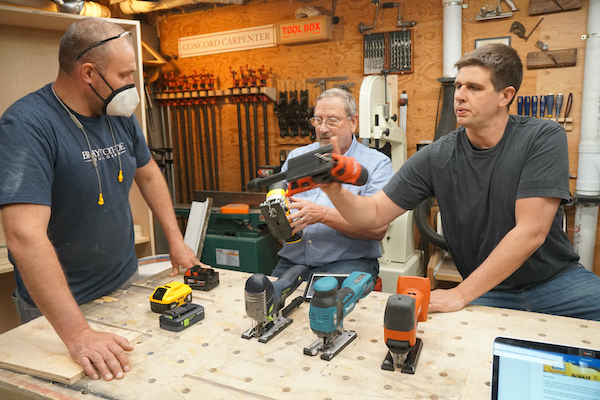
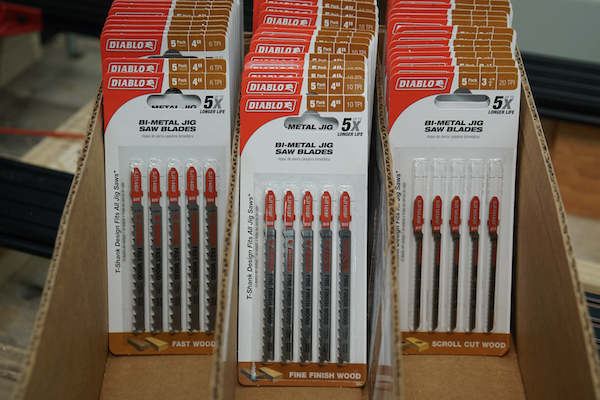
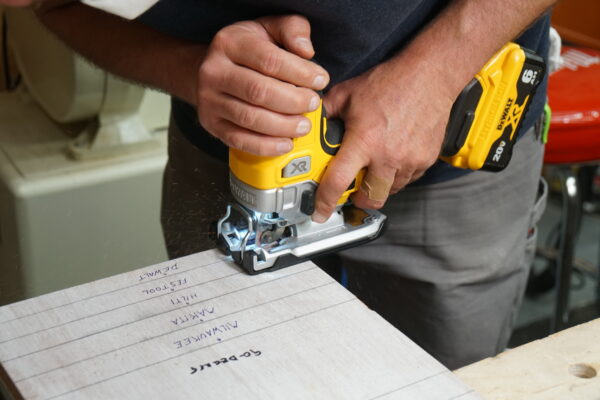
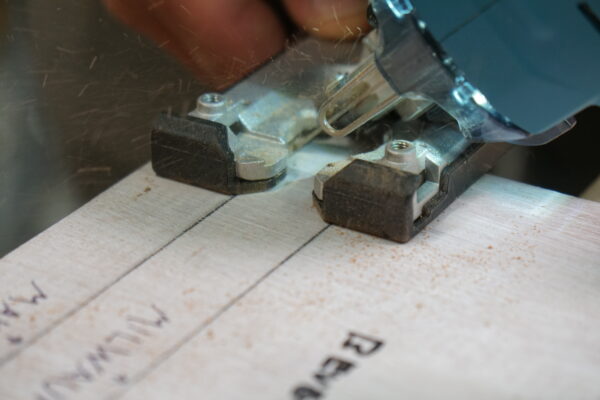
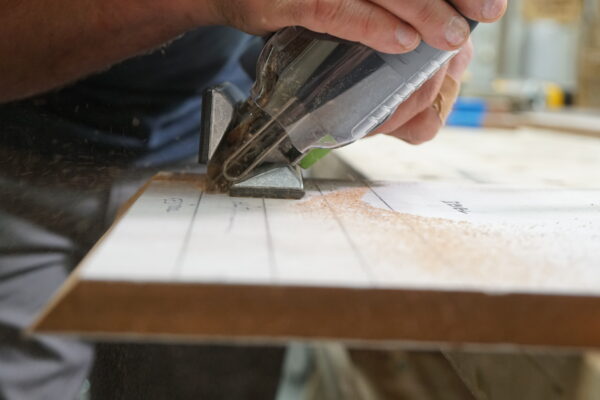
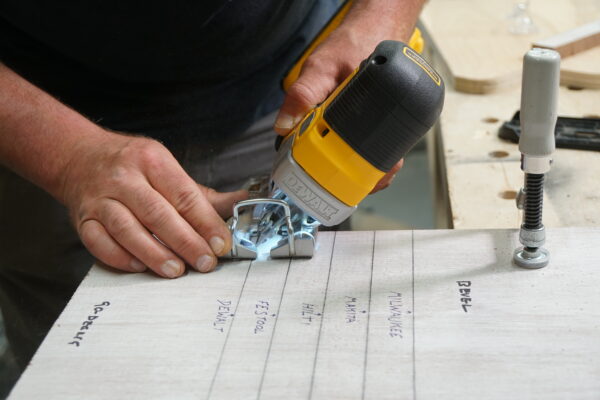
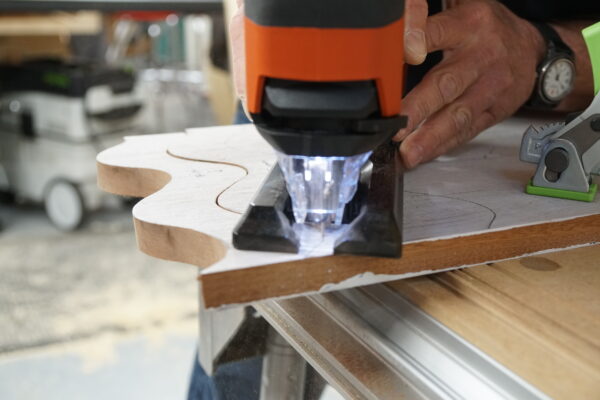
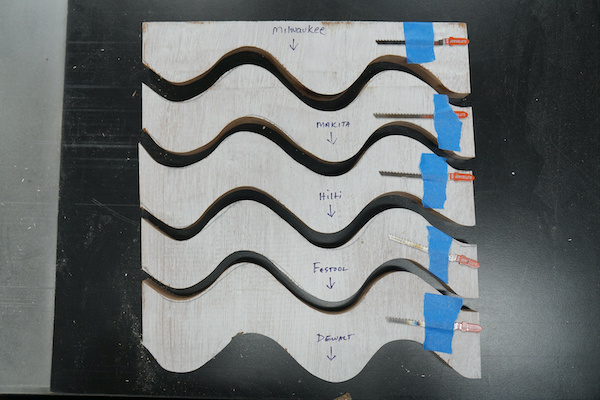
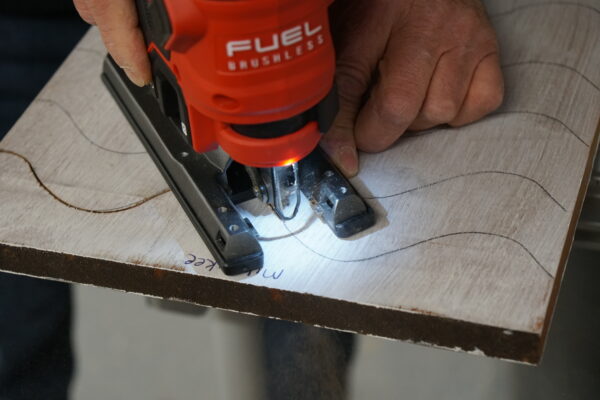
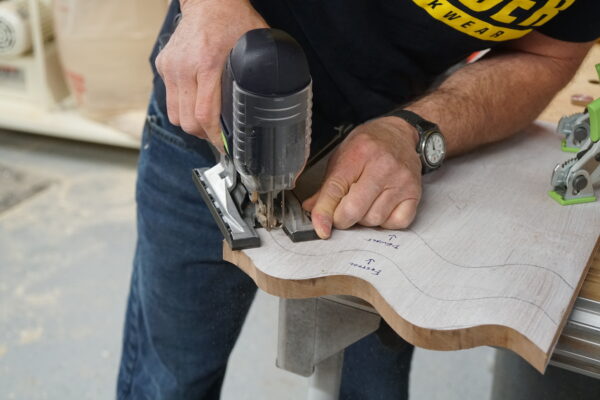
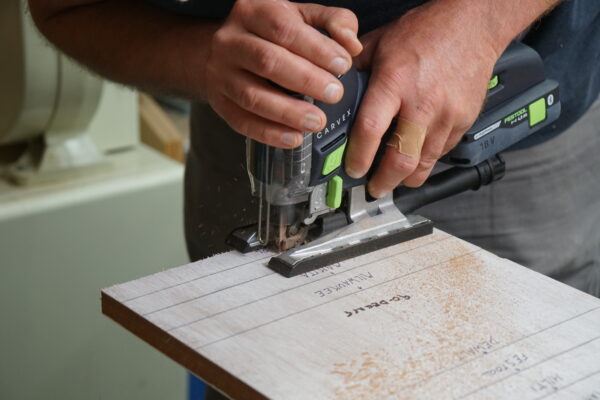
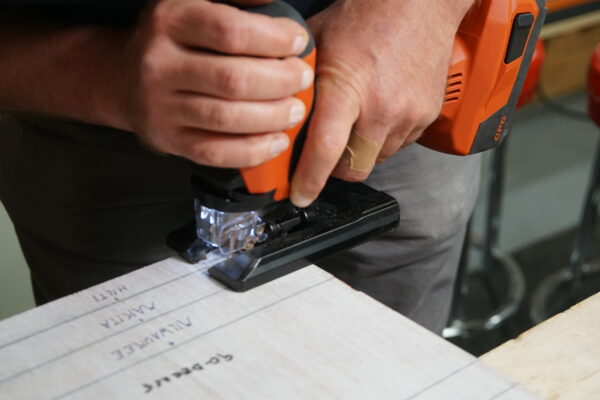
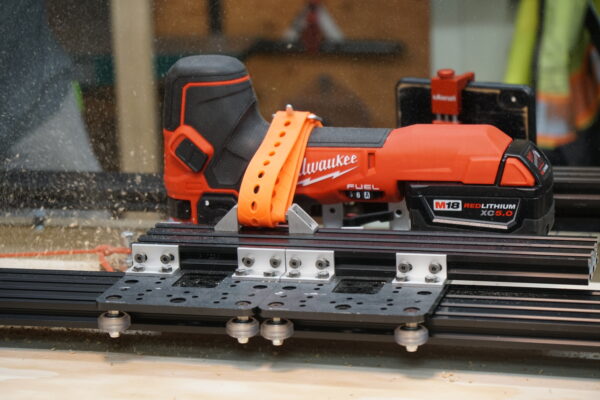
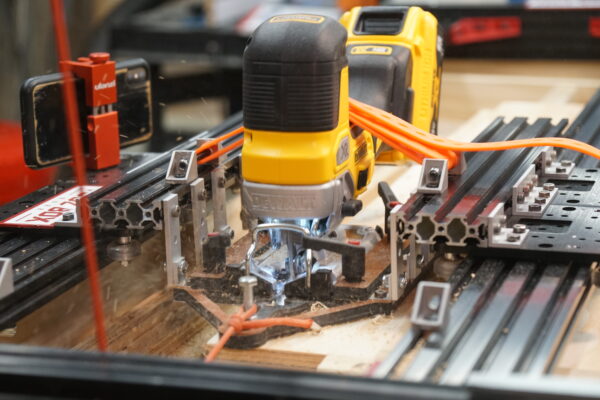
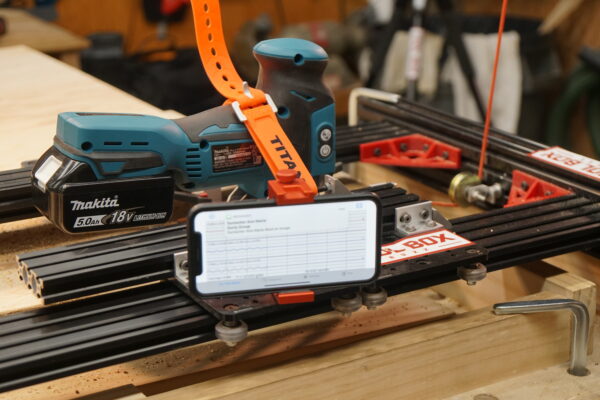
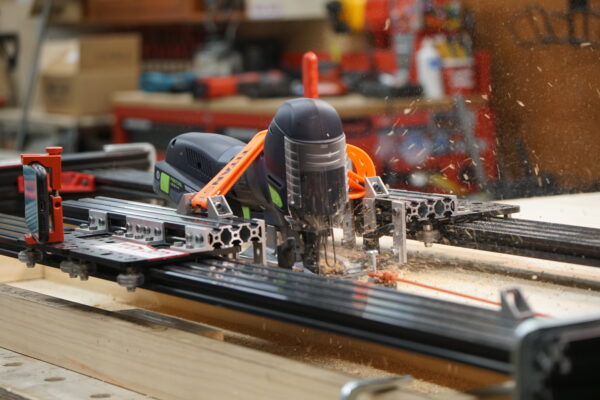
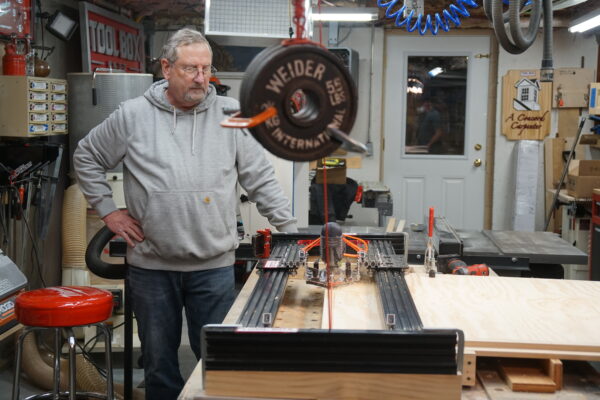
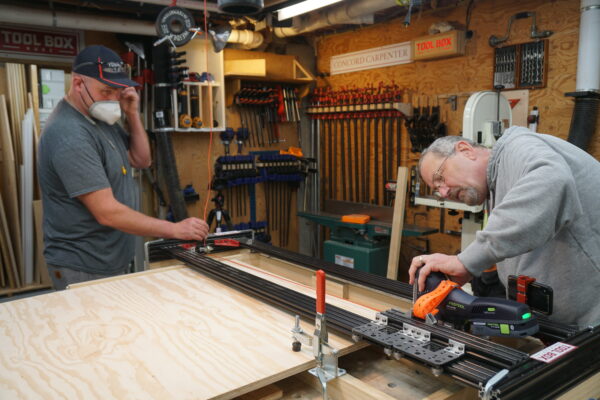
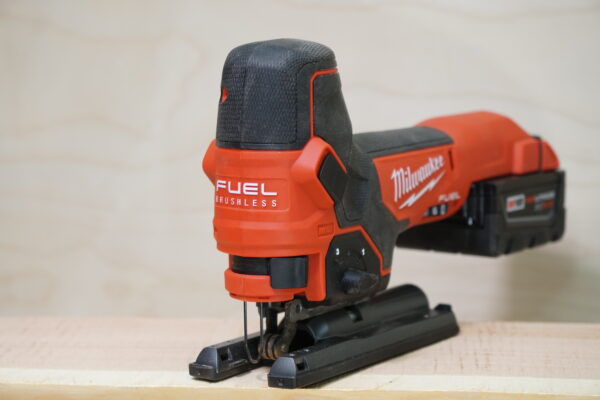
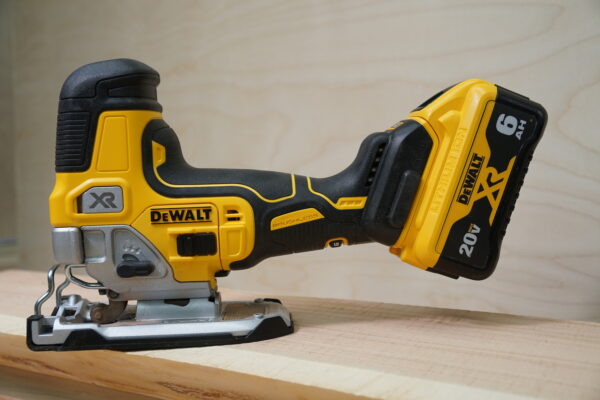
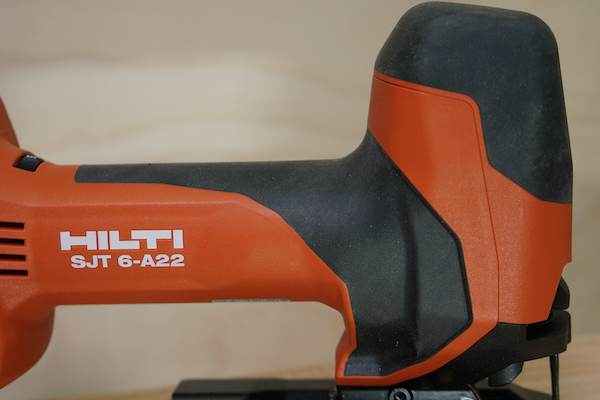
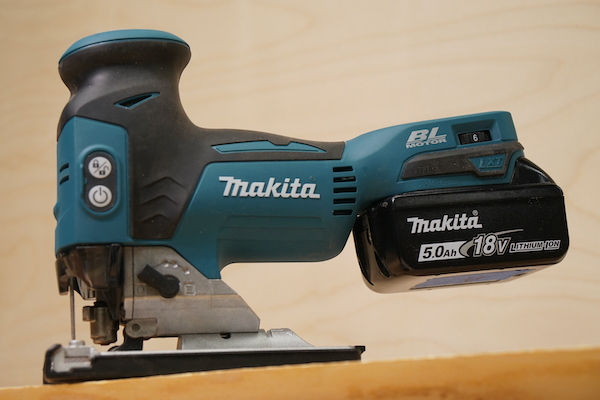
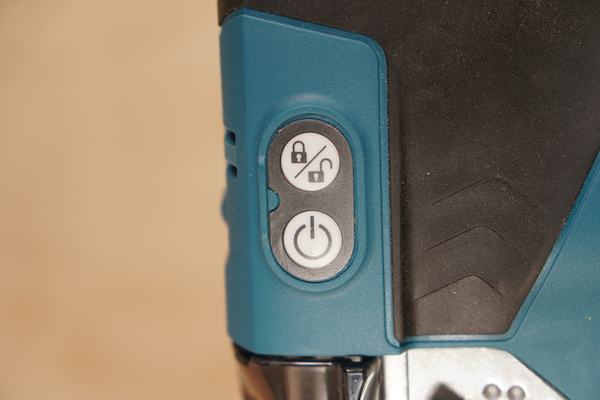
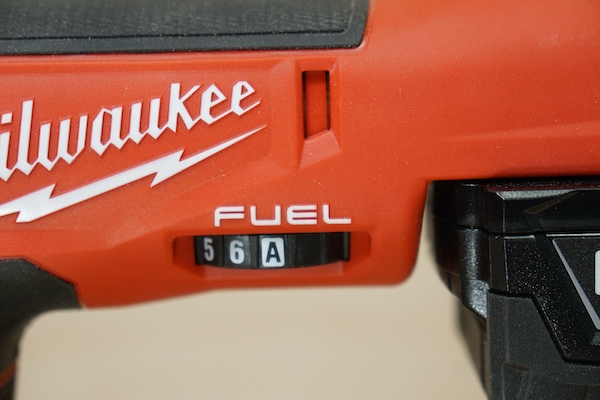
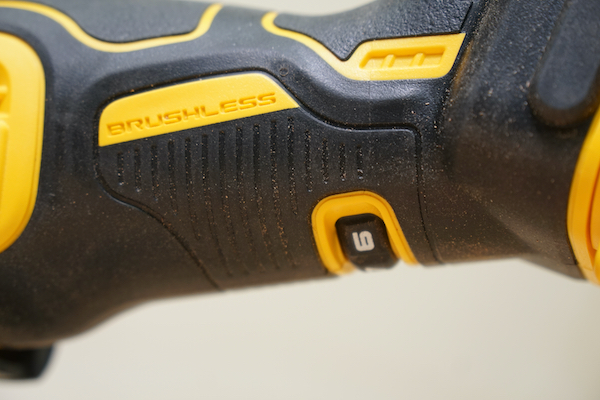
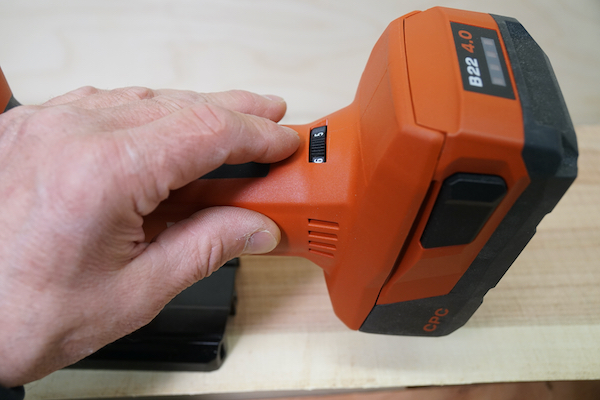
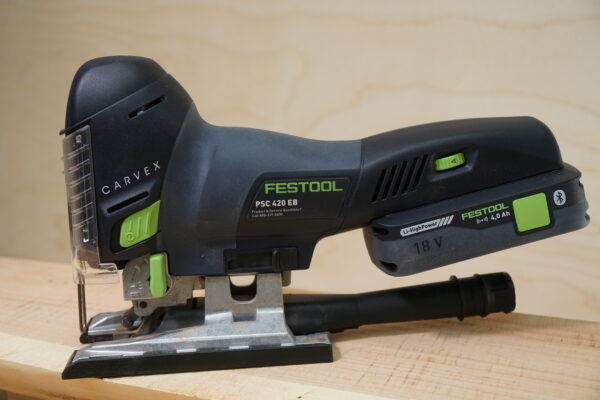
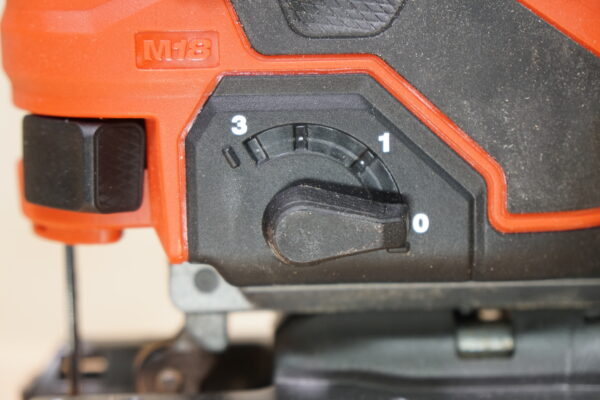
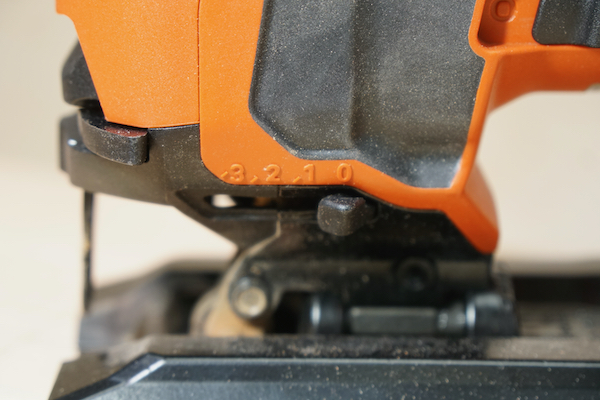
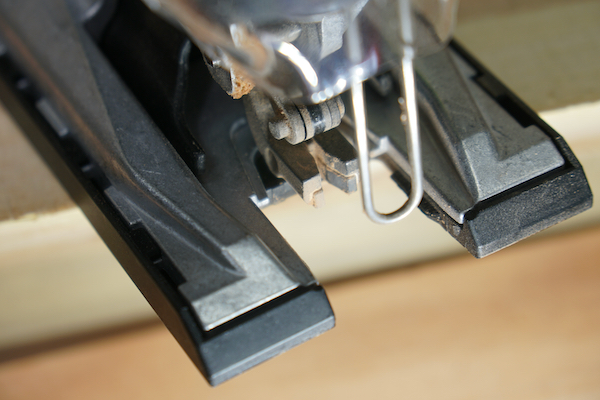
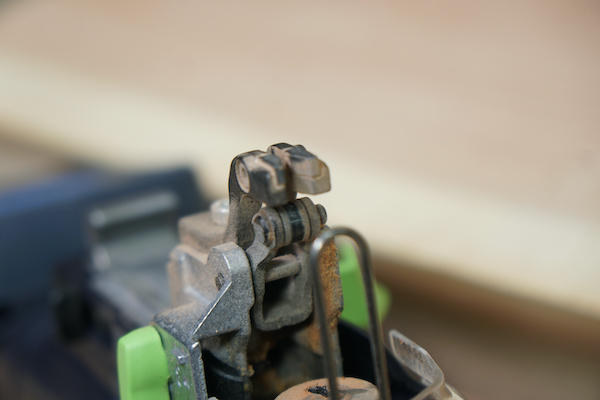
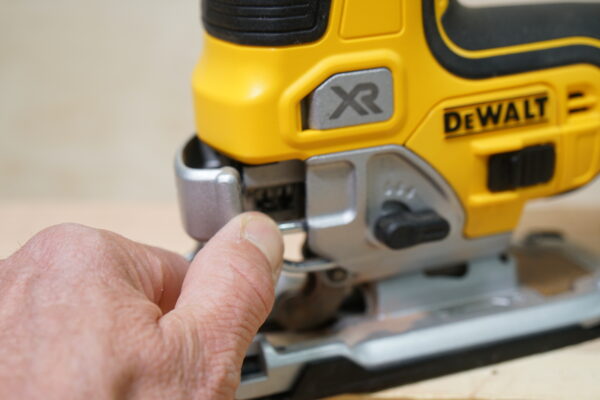
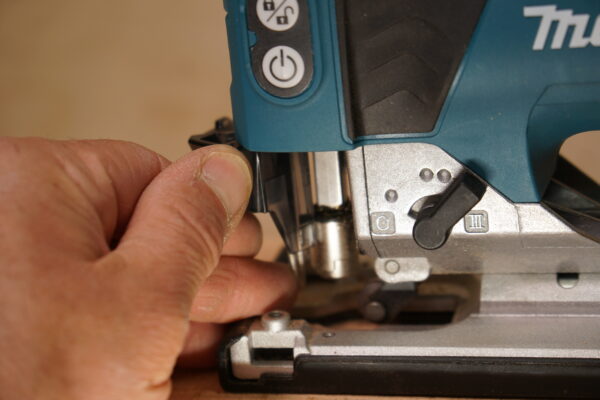
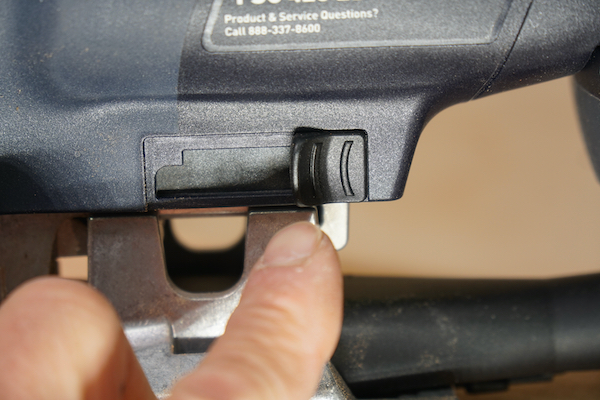
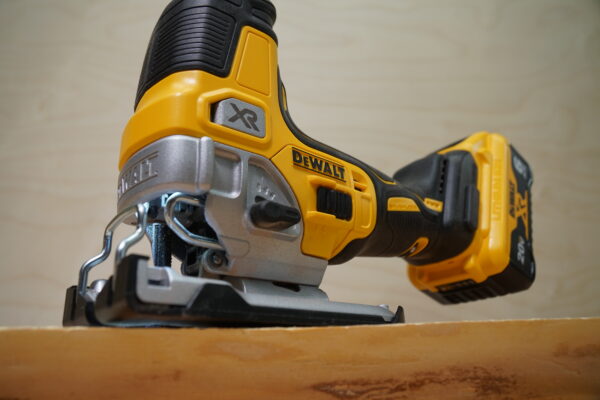
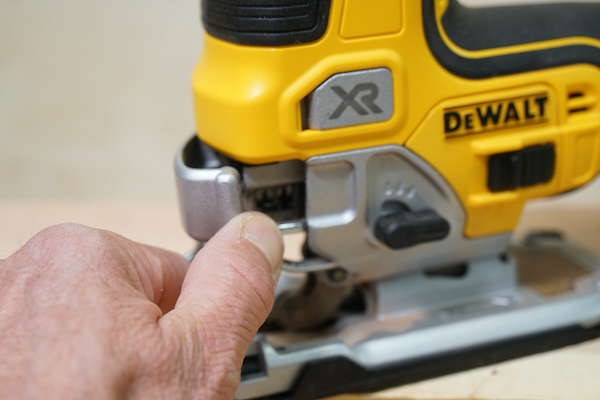

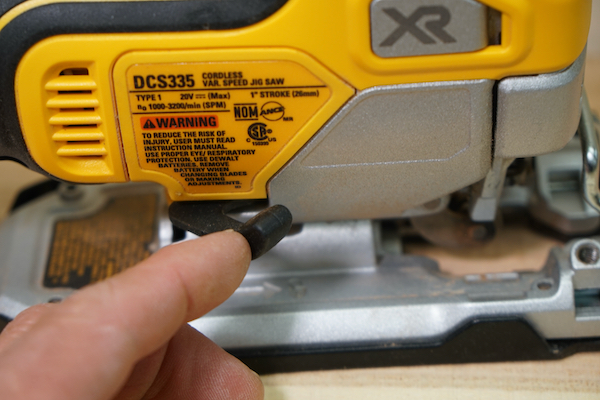
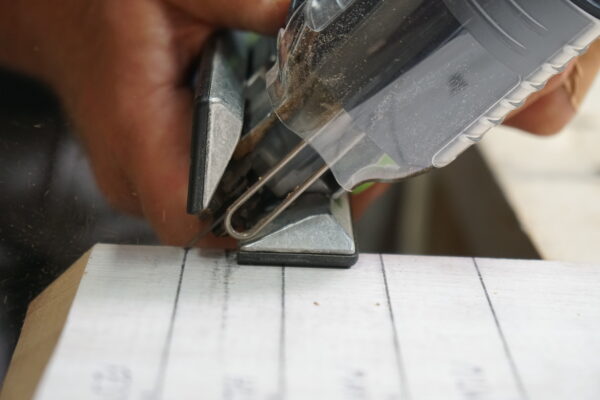
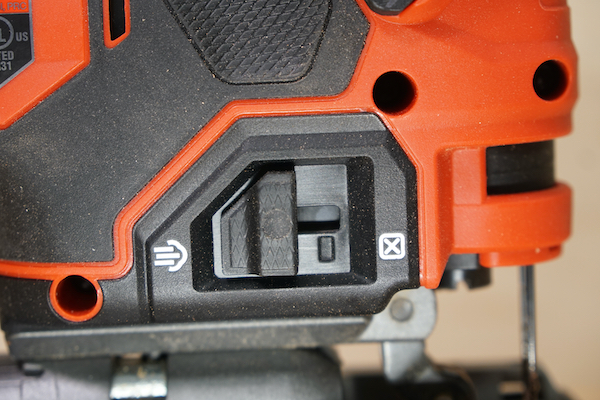
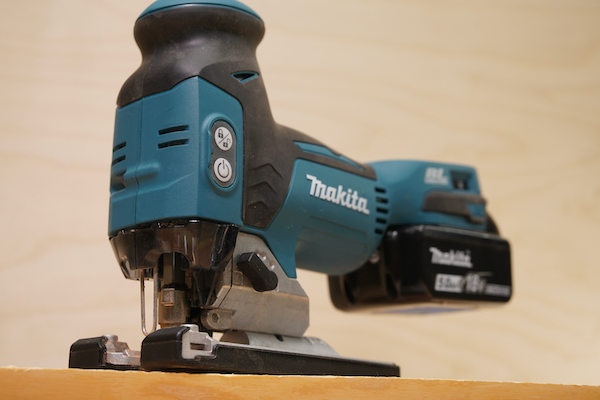
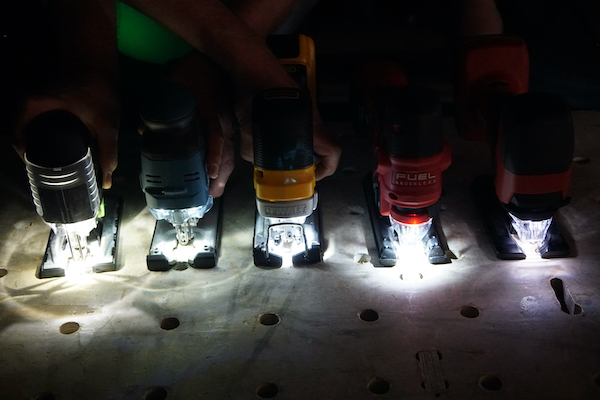
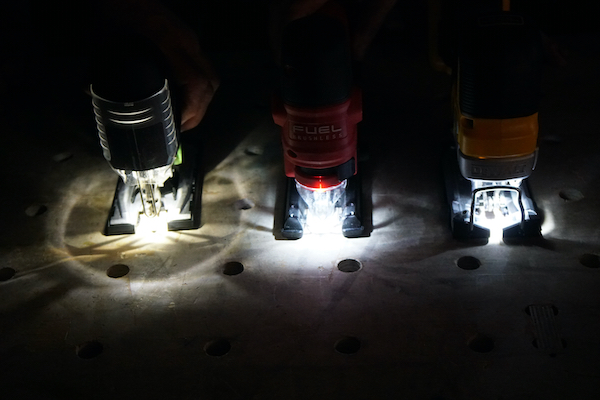
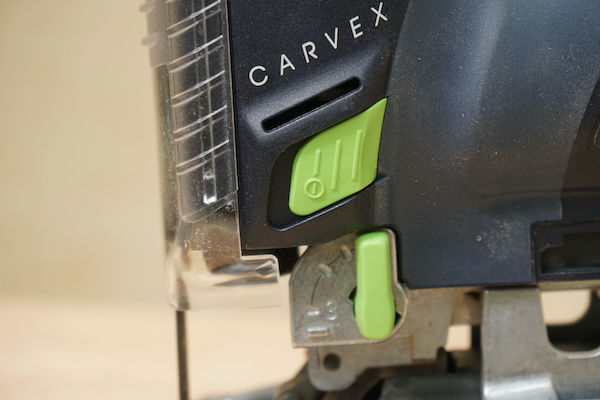
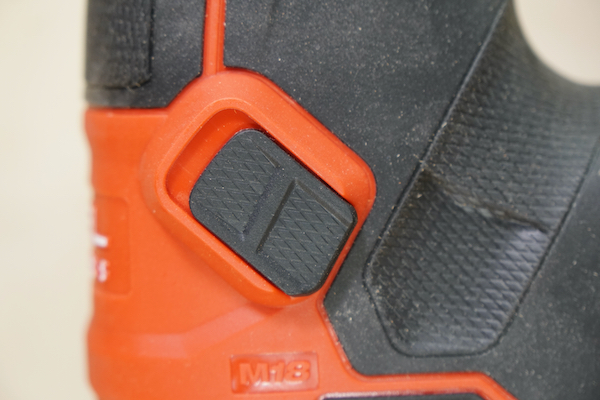
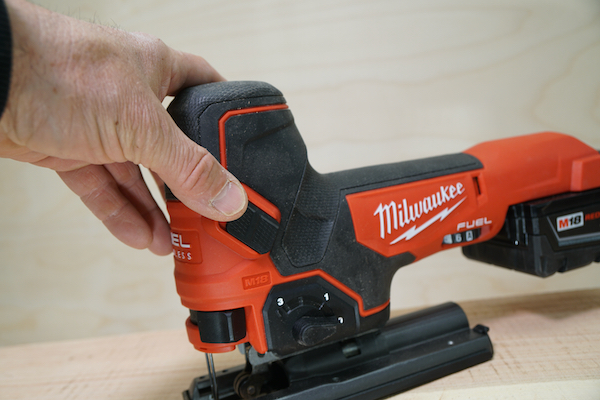
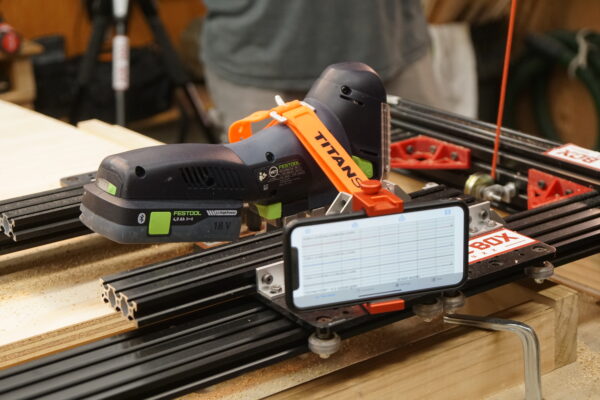
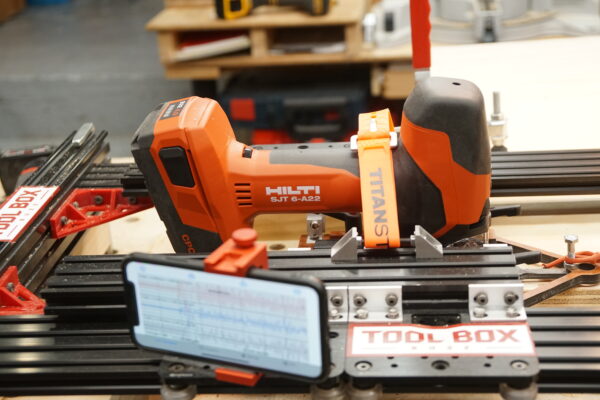
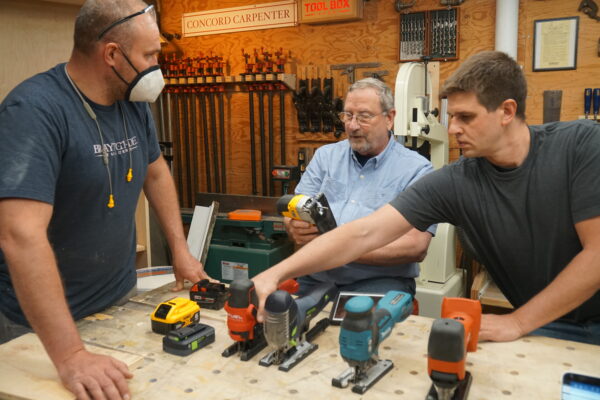












Finally a test for cordless jigsaw, been waiting for almost a year for that 😉
Thanks you guys are awesome.
But one question about this test.. one of the benefits of a jigsaw is
Being able to use long blades to cut through 4×4.
Are those jigsaws up to the task?
Interested in the Makita in particular ..
Thanks!
shahar Brian
Interesting question! I’ve never used a jigsaw to cut 4×4’s, that’s a job for a circ saw and recip saw. I suppose it’s possible, but I’ve never seen it done. Having said that, I think most of these could do the job with the right blade and not rushing the cut.
…and, of course, I’m torn between the Bosch & the Metabo (140)! Anyone know where they fall in this mix?
Are you planning to test Flex’s barrel grip jigsaw?
No current plans
Quick question, I’ve read both of your cordless jigsaw reviews (D grip and barrel grip), and I noticed that you don’t express a preference for one or the other.
Do you feel like it’s purely a matter of personal taste and hand feel, or are there some significant differences in suitability to task, performance, or other meaningful differences between the two styles?
It’s a long debate and ultimately we feel a personal preference. I prefer barrel grip, but I know many prefer the top grip.